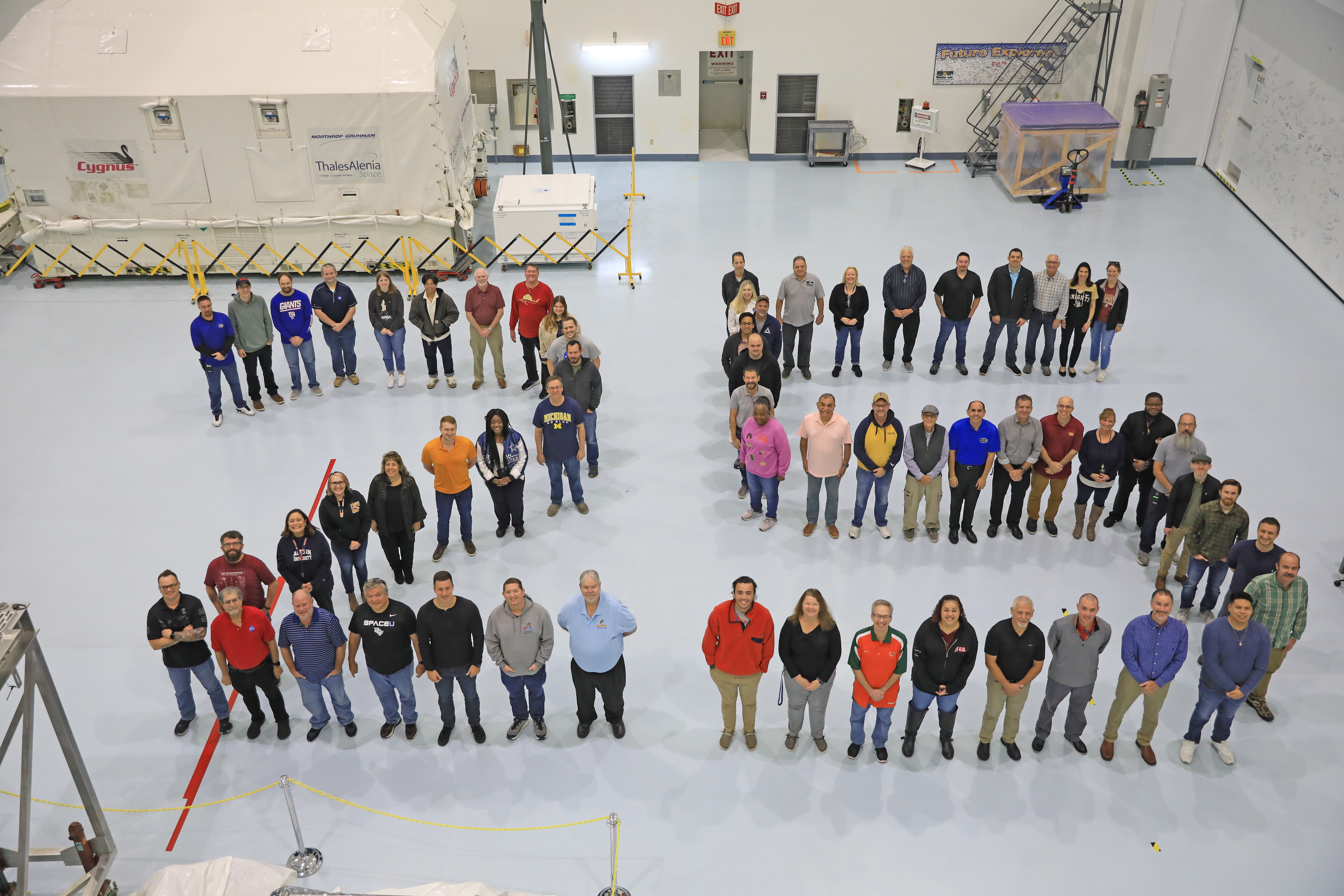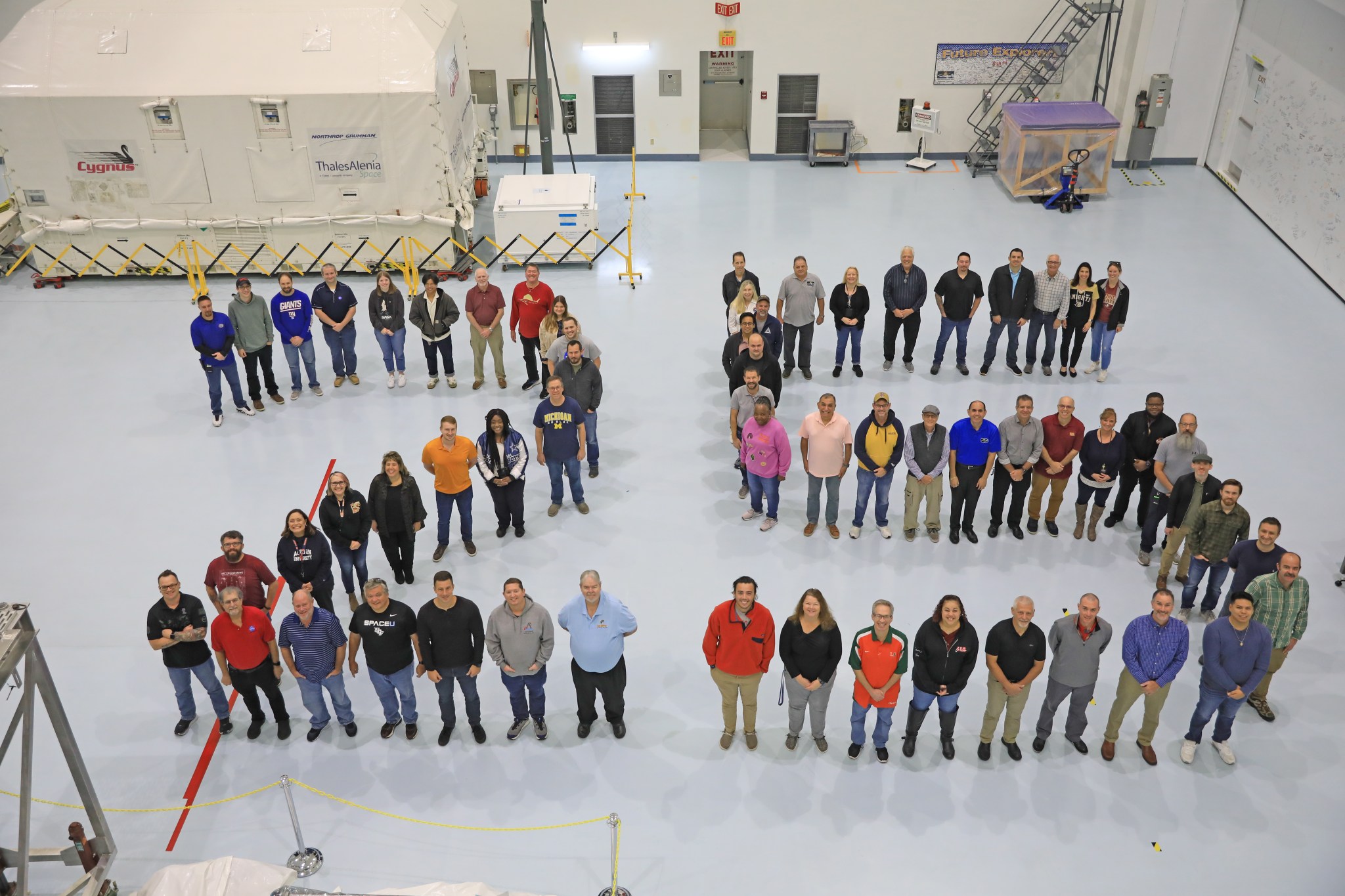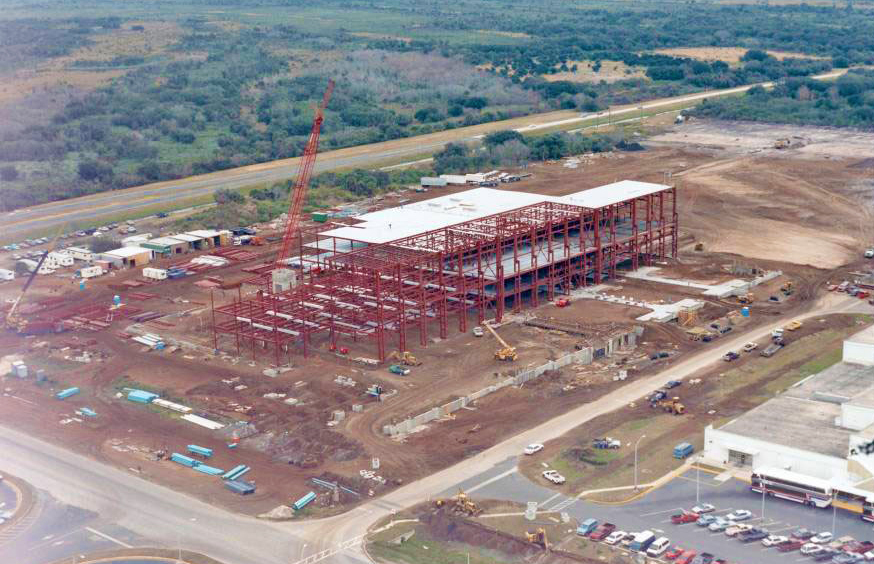NASA Facility Builds on Space Station Legacy at Kennedy
Built to be the last stop for components of the International Space Station, the Space Station Processing Facility (SSPF) at NASA’s Kennedy Space Center in Florida, has been given a new name that honors this legacy while embracing its role as a multi-tenant processing facility. Agency officials have updated the name of the 457,000 square […]


Built to be the last stop for components of the International Space Station, the Space Station Processing Facility (SSPF) at NASA’s Kennedy Space Center in Florida, has been given a new name that honors this legacy while embracing its role as a multi-tenant processing facility.
Agency officials have updated the name of the 457,000 square foot, three-story building to “Space Systems Processing Facility,” recognizing its progression into a workplace for processing hardware bound for the station as well as to the Moon and beyond.

“Kennedy Space Center has a strong history of supporting the missions that have improved life on our planet while inspiring the world,” said Kennedy Space Center Director Janet Petro. “For the last 25 years, the facility has processed many of the critical components and elements necessary to build and sustain the work of the International Space Station. This name change reflects its remarkable evolution into a dynamic, multi-user processing environment in the wake of the center’s transformation to the nation’s premier spaceport, and we are seeing our vision of igniting space exploration and discovery come to life.”
Today, NASA programs such as Artemis and Commercial Resupply Services use the SSPF processing areas, with Gateway processing set to begin within the next few years. Commercial companies such as Northrop Grumman, Sierra Space, and SpaceX also manufacture and process payloads and hardware in the facility.

“All of the tenants in the facility are under contract with NASA to develop a product,” said Kevin Zari, associate director for the International Space Station and Exploration. “The next step in the evolution of the SSPF is going from government to commercial, just like we did with Low Earth Orbit launch vehicles. Soon, commercial entities might be using the facility, or some parts of the facility, on purely commercial ventures.”
Built originally for assembling and processing components for the space station, the SSPF hosted processing of the first U.S.-built component of the station, Node 1 – or the Unity connecting module – which was carried to orbit on STS-88 from Kennedy in December 1998. Node 1 helped kick off a 25-year legacy of 275 launches to the station, 337 dockings or redockings of spacecraft or modules, and over 3,700 science investigations since Expedition 0. This includes hosting 273 people from 21 countries – and counting – visiting or living on the orbiting laboratory. The SSPF played a key role each step of the way as the main site for processing station components, flight hardware, and science experiments in the clean room environment of its processing bays.

“The SSPF started off with the need to meet the requirements of the space station program,” Zari said. “Since the space shuttle was the lift vehicle for assembling the space station, with the exception of the Russian module and components, all NASA, ESA (European Space Agency), and JAXA (Japan Aerospace Exploration Agency) equipment came here to the SSPF for processing prior to launch.”
Space shuttle missions delivered nine elements of the station processed in the SSPF: Unity, Z1 truss, P6 integrated truss, Destiny, Canadarm 2, the joint airlock, and the S0, S1, and P1 trusses. All preparation and postflight maintenance for other vital parts of space station assembly was conducted in the SSPF, including multi-purpose logistics modules with critical supplies and science experiments that were flown to the station.

“Even while the space station was still being built in the SSPF, you had science being checked out and ready to fly up to the station,” Curt Horanic, International Space Station technical director. “The SSPF was critical to assemble the space station, to test space station hardware on the ground, and to the science. First and foremost, the station is a laboratory and the research that’s happening is helping humans on Earth. And all of that research, for the most part, is coming through the SSPF.”
Both Horanic and Zari are among the small group of Kennedy employees who have been a part of the SSPF’s evolution since the beginning. Located just east of the Neil A. Armstrong Operations and Checkout Building, groundbreaking for the SSPF took place in March 1991 and dedication occurred in June 1994.

“I remember being across the street at the Operations and Checkout Building when they used a golden shovel to dig the dirt that was here,” said Zari. “It’s been an amazing journey to watch it transform from a facility with only the space station in mind to a multi-program, multi-tenanted facility.”



































